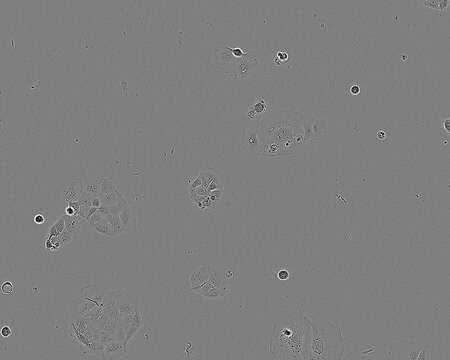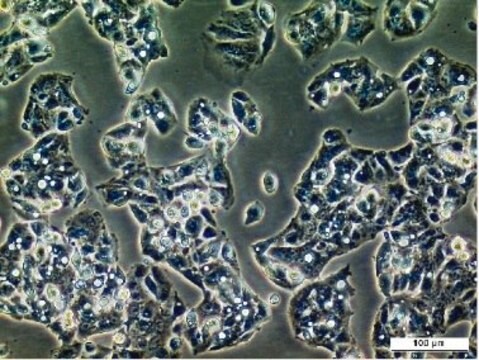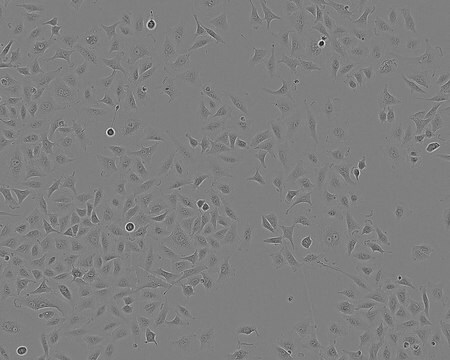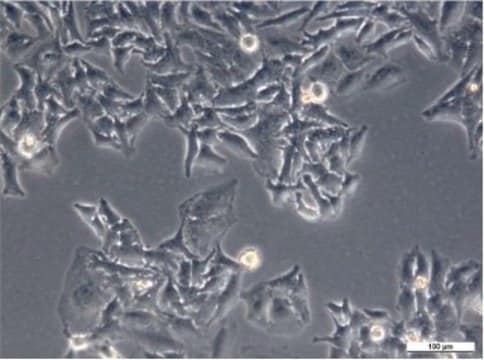RAW 264 Cell Line from mouse
NOTE: Both the cell line and DNA from the cell line may be available for this product. Please choose -1VL or VIAL for cells, or -DNA-5UG for DNA, 85062803, mouse blood, Macrophage
About This Item
Productos recomendados
biological source
mouse blood
description
Mouse leukemic monocyte-macrophage
packaging
tube of 5 μg 85062803-DNA-5UG
pkg of vial of cells 85062803-1VL
growth mode
Semi-adherent
karyotype
Not specified
morphology
Macrophage
products
Lysozyme
receptors
Immunoglobulin and complement
technique(s)
cell culture | mammalian: suitable
relevant disease(s)
cancer
shipped in
dry ice
storage temp.
−196°C
Cell Line Origin
Cell Line Description
Application
- to study the anti-inflammatory effect of galectin-3 on RAW 264 macrophages which are stimulated with lipopolysaccharide
- to study the effect of titanium particles on progranulin (PGRN) expression in RAW 264 cells
- to study the effects of a nutritional supplement on interferon-γ (IFN-γ)-induced expression of macrophage chemoattractant protein-1 (MCP-1) and intercellular adhesion molecule-1 (ICAM-1)
Culture Medium
Subculture Routine
Other Notes
Elija entre una de las versiones más recientes:
Certificados de análisis (COA)
It looks like we've run into a problem, but you can still download Certificates of Analysis from our Documentos section.
Si necesita más asistencia, póngase en contacto con Atención al cliente
¿Ya tiene este producto?
Encuentre la documentación para los productos que ha comprado recientemente en la Biblioteca de documentos.
Nuestro equipo de científicos tiene experiencia en todas las áreas de investigación: Ciencias de la vida, Ciencia de los materiales, Síntesis química, Cromatografía, Analítica y muchas otras.
Póngase en contacto con el Servicio técnico




